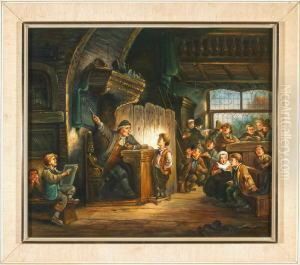Johann Ii Scherer Paintings
Johann II Scherer was a German organ builder from the Baroque period, born in 1623 in the region of Swabia, which is now part of modern-day Germany. While his name might not be universally recognized like those of the great composers or painters of his time, Scherer played an important role in the development of the organ as a musical instrument, contributing to its technical and aesthetic evolution during the 17th century. His work primarily centered around the area of Northern Germany, which was a hotbed for organ construction and innovation, influenced by the Lutheran Church's emphasis on music and hymn singing in worship.
Scherer came from a family of organ builders, which provided him with a rich environment for learning and mastering his craft. His father, Johann I Scherer, was also a notable organ builder, which suggests that he likely received his initial training from his father, learning the intricacies of designing, constructing, and maintaining these complex instruments.
Throughout his career, Johann II Scherer was responsible for building and refurbishing a number of organs. His works were known for their rich voicing and elaborate façades, which often included intricate carvings and gilding. Scherer's organs were appreciated for their mixture of innovative mechanics and artistic design, making them both musical and visual centerpieces of the churches they inhabited.
Despite the importance of his work, much of Johann II Scherer's life and career remain shrouded in the mists of time. Detailed records of his commissions, the exact number of organs he built, and the specifics of his innovations are scarce. However, it is known that he continued the legacy of his family's craft until his death in 1699.
Today, Johann II Scherer is recognized by organ enthusiasts and scholars for his contributions to the field of organ building. While few of his instruments survive in their original form, due to subsequent renovations or destruction, those that do serve as a testament to the craftsmanship and musical heritage of the Baroque era in Germany.
